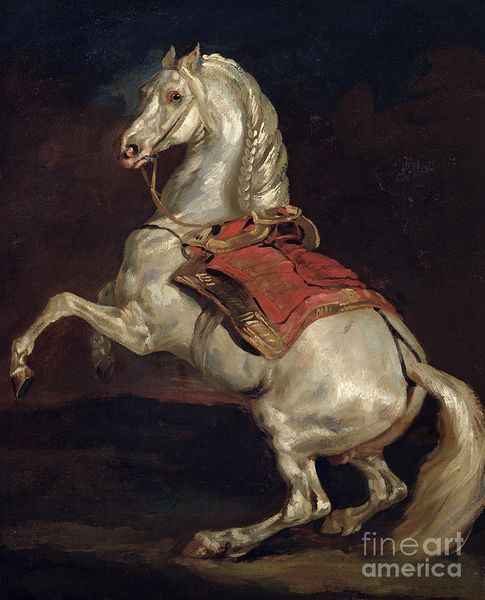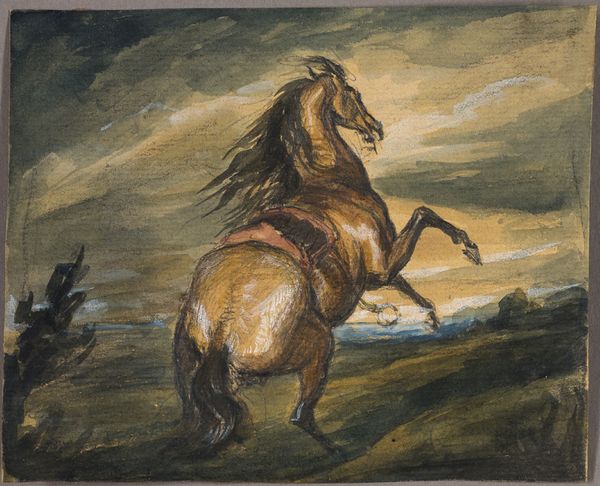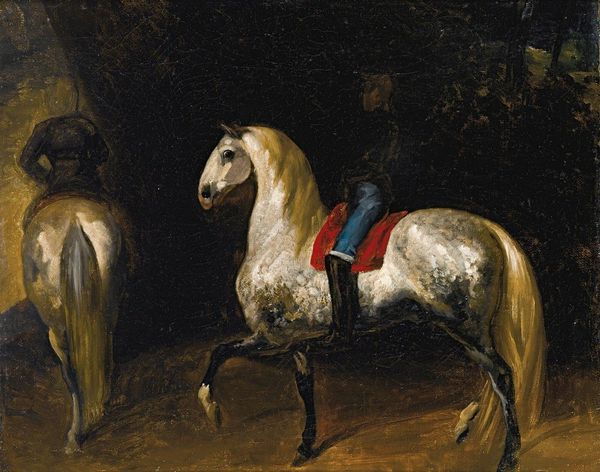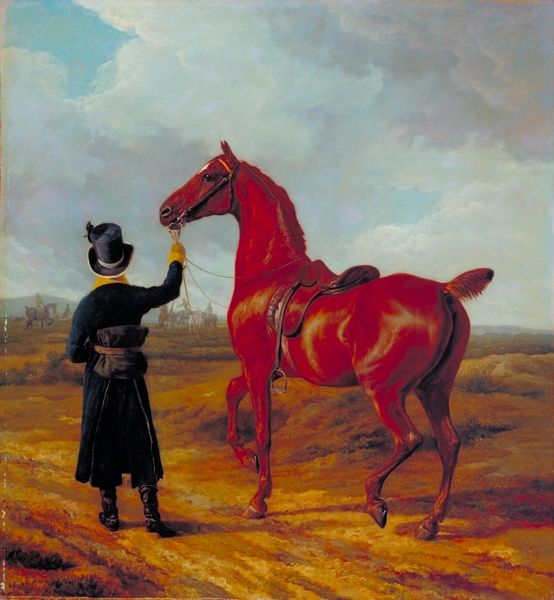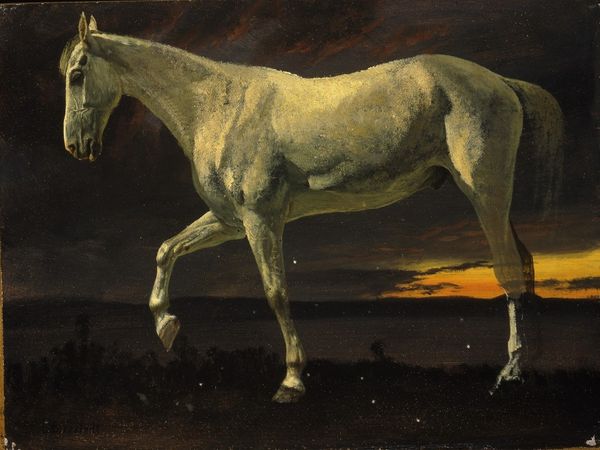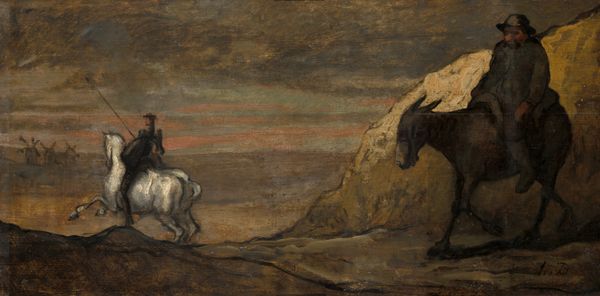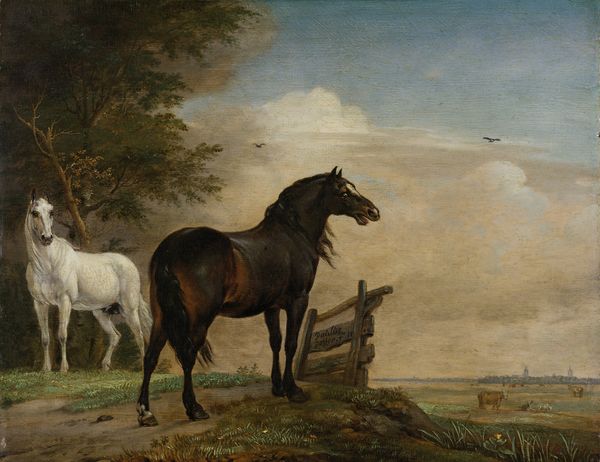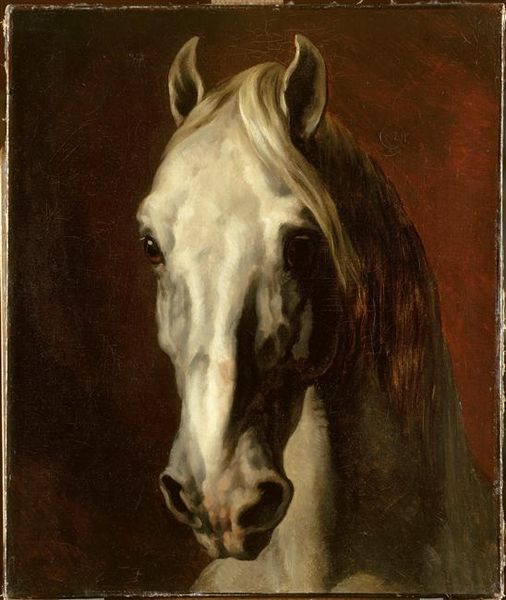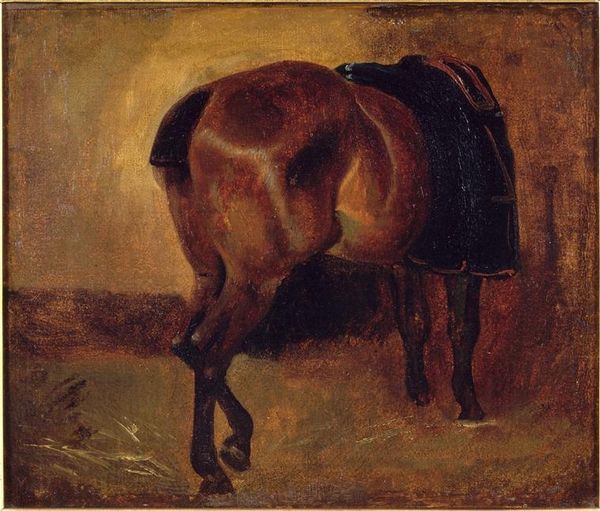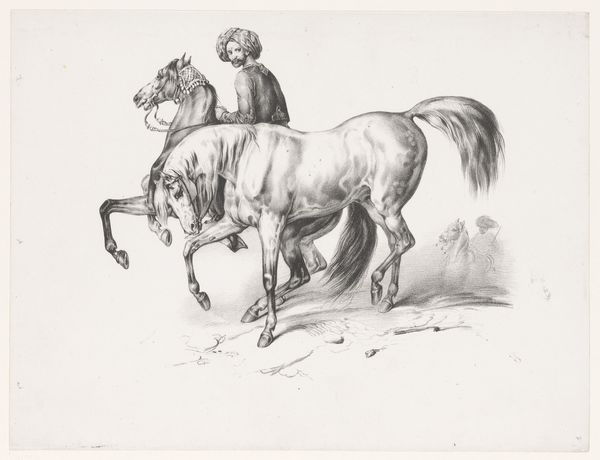
White Horse trotting over a flat Landscape before a City after 1648
0:00
0:00
painting, oil-paint, oil, canvas
#
portrait
#
baroque
#
animal
#
painting
#
oil-paint
#
oil
#
landscape
#
figuration
#
oil painting
#
canvas
#
underpainting
#
horse
#
painting painterly
#
14_17th-century
Dimensions: 101.5 x 68.0 x min. 0.8 cm
Copyright: Public Domain
Editor: Here we have Peter Paul Rubens’ “White Horse trotting over a flat Landscape before a City,” painted sometime after 1648 using oil on canvas. I'm immediately struck by how monumental the horse appears, almost imposing, against the backdrop of the city. What should we consider when trying to interpret a piece like this? Curator: It's important to look at this work within the context of 17th-century power structures and patronage. Depictions of horses, particularly white horses, often signified wealth, nobility, and military prowess. Do you notice how the landscape itself seems secondary? Editor: I do, now that you mention it. The city in the background feels almost like set dressing. Was Rubens making a statement about the importance of the elite over the urban landscape? Curator: Perhaps. The composition places emphasis on the animal, imbuing it with significance. However, consider who would commission or purchase such a piece. It speaks to a culture where animals were integrated into displays of power and control. Notice, too, how idealized the animal is; it's a Baroque celebration of strength and vitality. How do you feel about that idealization today? Editor: I suppose it makes me a bit uneasy. While technically stunning, the painting almost feels like propaganda, glorifying a social order built on inequality. The average person’s lived experiences were probably very different from what this painting suggests. Curator: Exactly. And thinking about that tension—the skill of the artist versus the socio-political implications of the imagery—is precisely what allows us to engage critically with the art of the past. It’s about understanding whose stories are told, and how. Editor: That's a great point. I'll definitely look at Baroque art differently now. It's a reminder to always consider the cultural and social context when interpreting artwork, especially in how the public consumes it.
Comments
No comments
Be the first to comment and join the conversation on the ultimate creative platform.
